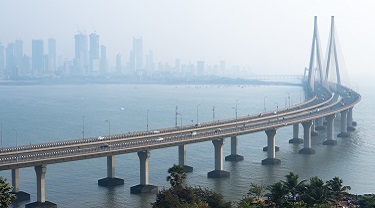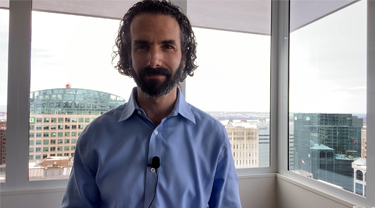CAN-ENG is a leading global designer and manufacturer of industrial furnace systems. Not the ones in your basement or office, mind you, but the types that are used for the thermal processing of metals. Industrial furnaces are the backbone of every industrialized nation, and in our business, there’s no such thing as a standard furnace … no one-size-fits-all. You’ll find our innovative solutions beating in the heart of countless industries: Oil and gas, forging, fastening, rail car, aerospace and automotive, to name just a few.
In fact, the auto industry figured prominently in our early days. Founded in 1964—just one year prior to the formation of the Canada-United States Auto Pact—our company rode the wave that would transform Ontario into a global powerhouse in both automobile and parts production. Cars need steel, and steel needs industrial furnaces to transform their properties. A huge over-simplification, but you get the point.
Exporting pioneer
Our founders were not only professional engineers, they were entrepreneurs and exporting pioneers. They managed to shape CAN-ENG into a strong domestic furnace builder, and at the same time, establish us as a global export business. Let’s face it: you quickly exhaust your opportunities in Canada in our line of work. Barely one year after opening our doors here at home, we established SELMEC, a wholly-owned subsidiary in Mexico. We built the largest industrial furnace operation in that country to support the recently established Volkswagen and General Motors facilities. Back then, that took more than just vision. It took a lot of guts, since the business climate in Mexico 55 years ago was hardly what it is today.
It goes without saying, that the U.S figured prominently in our business operations. At various times, the U.S. has represented more than 80% of our company’s revenues. But we never thought of them as an export market, per se, but more like an extension of the domestic market. By the early 2000s, we recognized that an over-dependence on the American market meant we should be looking for greater geographical market diversification. So we made the conscious decision to reinvigorate our global export business.
This eventually led to contracts in Russia, Ukraine, Mexico, Korea, Holland, Poland, Germany, and the list goes on. Success in those markets led to orders in China and India.

The India imperative
Our first foray into India started about a decade ago. And why not? It’s a market that’s developing at a rapid pace. There are lots of infrastructure projects on the go. The middle class is rising steadily. The opportunities are huge, and in many ways, India is the last big emerging market in the world. They’re going to need a lot of steel to get where they want to be; simply put, growth in the Indian steel sector is a given. As an export company, we simply couldn’t ignore this burgeoning market, so we decided to jump in with both feet and start doing business in India.
It took us nearly three years to win our first Indian order, which resulted in a consortium contract between CAN-ENG—the consortium and technology leader—and two local Indian partners that provided both manpower and various infrastructure supports. Because the contract was with an Indian public entity, we thought the process would go smoother than if we’d been dealing with a private company. That wasn’t the case.
Lessons from India
1. Bureaucracy with a capital “B”
Words of advice: Ratchet-up your contingency costs to factor in an exponentially longer time for completion. For us, what started out as a 22-month contract took more than seven years to complete and receive our final payment. On the one hand, it’s been a technical success: The equipment is running and has been for more than three years. In fact, the customer received both production and quality awards for their new facility. On the other hand, the contract didn’t produce the commercial results that we expected when we entered it, with a slim profit margin at the time of closing.
2. Vet your partners carefully
Ours was a consortium project, so there were certain requirements to work with local suppliers that had prior relationships with the buyer. Although we did initial due diligence, we perhaps should have done a more thorough vetting job. Inaction on the part of the consortium partners resulted in a significant lateness penalty. So again, factor that into your costs.
3. Contract limits
Our particular project was with a government entity, so in the end, regardless of the terms of the contract, they remain unassailable. Even when we met the contractual terms, the client managed to create new milestone requirements effectively moving the goal posts which were hindered by the unending committee approval process. Even if we could have litigated, the Indian legal system moves slightly slower than their bureaucracy. Chances are, you’re going to need some outside help.
4. Get help from Canadian agencies
With all the foot dragging on final payment, we eventually approached the Trade Commissioner Service (TCS) to see if they could help expedite things and bring closure to the contract. Take my advice: Get them involved upfront in the process. Their response times have been nothing short of incredible, and it’s worth noting that their Delhi-based office has lobbied extensively on our behalf. Export Development Canada helped us with bonding as well, so there are definitely things you can do to mitigate risks.

Keeping the door open in India
You’d think that with all of these hard lessons learned, we’d close the door on India. But in the true spirit of exporting and business in general, we’d prefer to lick our wounds, evaluate what we did wrong, and plan how we’d do things differently next time around. There’s a sister contract with the same Indian entity that might be moving forward this year. Suffice it to say, if we do get involved, we’d approach things very differently, fully armed with our experiences. To succeed in this market, you need patience, fortitude, personal strength and the type of personality that’s in it for the long-haul.
Without exporting, we wouldn’t exist
It’s really that simple: We export, therefore, we are. We wouldn’t be in business otherwise, nor would we be as good, which is something that bears discussion. When you make the decision to go into a new market, you have to dig deep and find out all about the regional competition. Once you’ve done that, you’ll need to adjust both your sales approach and your value proposition accordingly.
You want to sell to Poland? Then you better be prepared to offer an extraordinary reason why they should buy from you, a company thousands of kilometers away. You better have a better-than-good value proposition—in our case, better than what’s being offered by Germany, Italy or the United States—our key competitors.
Just by virtue of the fact that we have to design machinery that fits in a box—ocean containers—means we have to think way outside of the box. In the final analysis, the upside of exporting is that we’re a better company, we’re nimble, and we’ve driven down our costs. That’s a winning combination, and a compelling proposition, for any buyer … domestic or international.







